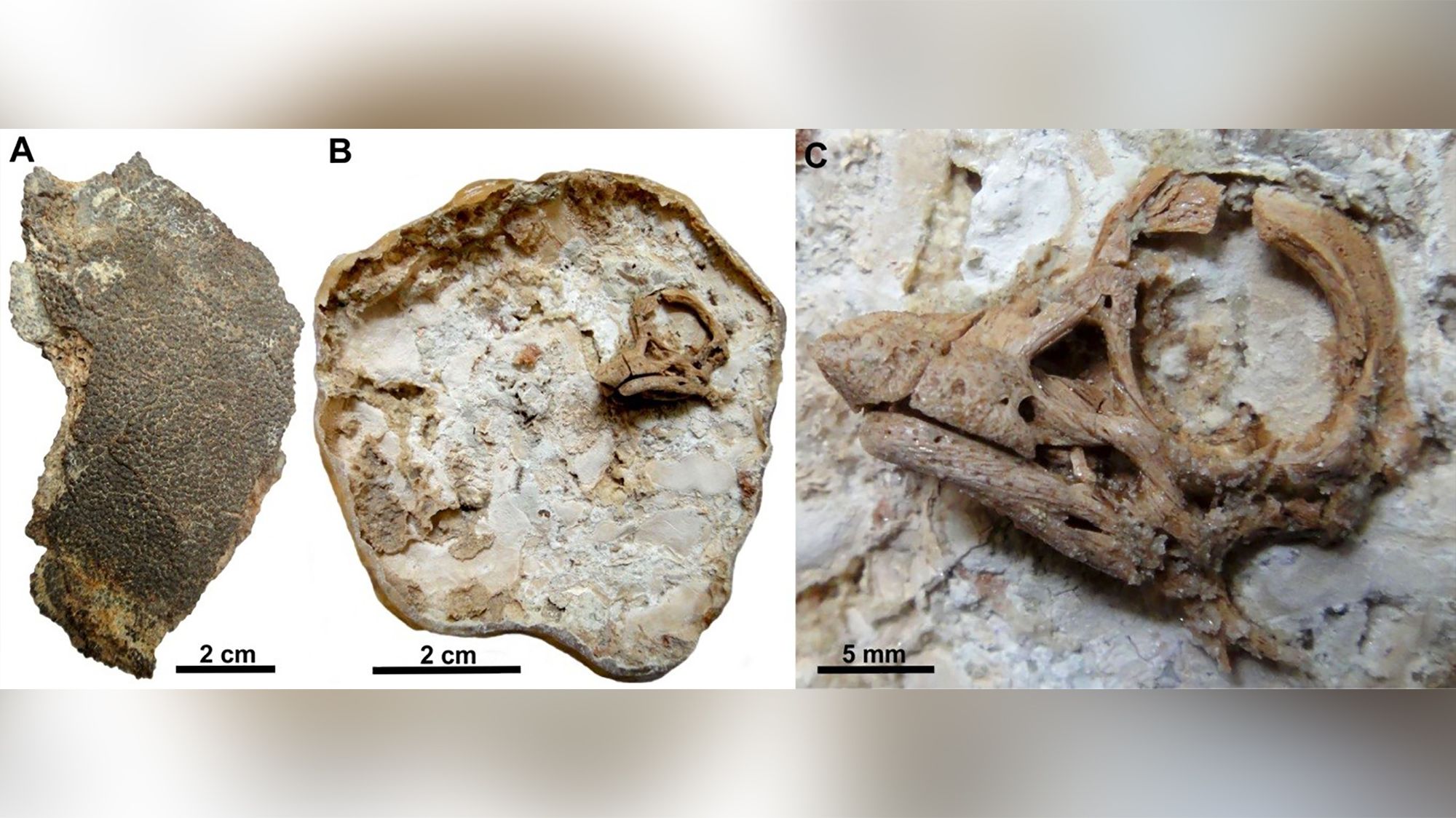The new specimen from the Upper Cretaceous Xiaguan Formation in the Chinese province of Henan is one of the few known fossilized turtle eggs containing an embryo with anatomical details.

An artist’s impression of baby nanhsiungchelyid turtles. Image credit: Masato Hattori.
“Fossilized turtles from the Mesozoic are known from a high abundance and rich diversity,” said Dr. Fenglu Han from the China University of Geosciences and colleagues.
“However, their fossilized eggs, found in America, Africa, Asia and Europe, are comparatively rare.”
“In China, only a few turtle egg fossils have been found in Henan, Shandong and Zhejiang provinces, all of which are assignable to the oofamily Testudoolithidae.”
“Fossilized turtle embryos are even more uncommon than eggs, but drawing particular interest because they represent one of the most reliable means of determining egg affinity.”

“To our knowledge, our study represents the first anatomical description and taxonomic identification of a Mesozoic embryonic turtle.”
In the study, the paleontologists examined a complete, unusually thick-shelled turtle egg containing embryonic remains from around 94 to 70 million years ago (Upper Cretaceous epoch).
The egg, which was collected in Neixiang County, Nanyang City, China’s Henan province, is roughly spherical and large, with a diameter of about 5.4 x 5.9 cm (2.1 x 2.3 inches).
The specimen is one of the largest and thickest shelled Mesozoic turtle eggs known.
“Although the egg is generally well preserved, its surface is partially broken and a large area of the shell is missing, exposing some of the bones of the embryo,” the researchers said.

Photographs and CT images of the nanhsiungchelyid egg from the Xiaguan Formation, China: (a) macromorphological photograph; part of its external surface was broken; (b) enlarged image of the white box in (a), showing exposed embryonic bones; (c) CT image showing the interior embryonic bones; (d) enlarged image of the white box in (c), showing a closer up of embryonic remains. Scale bars – 10 mm. Image credit: Ke et al., doi: 10.1098/rspb.2021.1239.
In order to glean morphological information from the embryo without destroying the egg, they used computed tomography (CT) scanning and 3D reconstruction technology.
Based on features of the egg and embryonic remains, they were able to confidently assign the egg to the family Nanhsiungchelyidae.
“The specimen is attributed to Nanhsiungchelyidae, an extinct group of large terrestrial turtles, possibly the species Yuchelys nanyangensis,” they said.
“This family is a clade of extinct large Asiamerican land turtles and the sister group to the aquatic Adocidae.”

“These two taxa form Adocusia, the sister-group to the crown-group Trionychia, and their identified eggs significantly increase our knowledge of the early evolution of reproductive features in this group.”
The new specimen also allowed identification of other nanhsiungchelyid egg clutches and comparison to those of Adocidae.
“Despite the differences in habitat adaptations, terrestrial nanhsiungchelyid and aquatic adocid turtles shared several reproductive traits, including relatively thick eggshells, medium size clutches and relatively large eggs, which may be primitive for trionychoids,” the scientists said.
“The unusually thick calcareous eggshell of nanhsiungchelyids compared to those of all other turtles (including adocids) may be related to a nesting style adaptation to an extremely harsh environment.”
Source: sci.news








